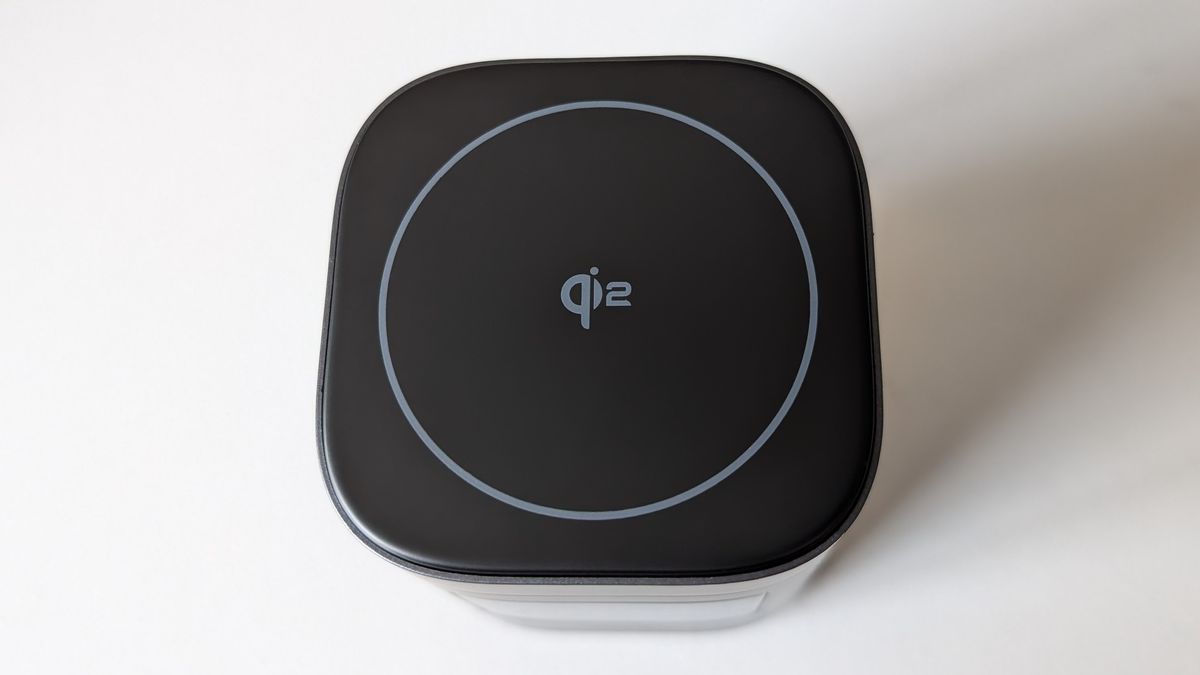Written by Sneh Pandya
Android is a large ecosystem rather than just another mobile operating system. Since its initial release in September 2008, Android has been receiving major improvements with every new release. So then, why do you need to pay attention to newly emerged cross-platform frameworks?
Android comes with a plethora of features, customization and great performance. Yet, it is difficult to maintain a mammoth codebase for Android and iOS separately. This problem is solved with frameworks like React Native.
What is React Native?
React Native is a cross-platform mobile app development framework that lets you create truly native apps and doesn’t compromise your users’ experiences. The best thing? It is built on JavaScript! As quoted by the official team:
React Native combines the best parts of native development with React, a best-in-class JavaScript library for building user interfaces.
React Native has witnessed consistently growing popularity since its inception in 2015. It also unlocks opportunities for web developers. The platform resolves the major challenge of separately maintaining a codebase for Android and iOS – hence, it allows you to maintain a single codebase for your mobile apps!
React Native has lightweight components, and a huge number of enterprises have started using the framework to develop and ship their mobile apps, including Facebook, Instagram, Shopify, Skype, Discord, Tesla, Pinterest, Call of Duty, Salesforce, Bloomberg and many, many more.
Whether you are an Android developer, an iOS developer or a web developer, React Native has robust documentation and an outstanding community to help you get started and build beautiful apps.
What are React Native’s top alternatives?
The biggest competitors in the landscape are Google’s Flutter and native Android itself. However, there are many others worth mentioning, including Ionic, Cordova, Xamarin and more.
Surprisingly, each of these frameworks is built on one or more software programming languages or frameworks that the developer ecosystem has been familiar with for the past decade or more.
-
Xamarin is built on the legendary .NET framework from Microsoft.
-
Cordova by Apache is built on HTML, CSS and JavaScript.
-
Ionic was initially built on top of AngularJS and Apache Cordova.
React Native, on the other hand, is built on top of React, the core framework. Despite the early rise of the above frameworks for cross-platform development, React Native rapidly caught the attention of developers, and its adoption has been growing ever since.
As React Native’s biggest competitor, only Flutter stands strong in the ongoing battle for the cross-platform mobile app development space.
Similarities and differences
The most important factor in mobile application development is scalability and performance for any userbase size. The biggest advantage React Native offers is a cross-platform experience that boils down to native components of Android and iOS when the application is running! This means that even with a codebase written in JavaScript, native components are rendered and triggered to handle interaction and, thus, memory footprint, versatility and experience remain intact.
Moreover, it supercharges web developers and allows them to deep dive into and develop mobile apps without much hassle since web developers already have a strong command over JavaScript.
Today, React Native is supercharged with robust underlying components, resulting in a seamless experience for end users. You aren’t able to tell whether an app is made in native Android, Flutter or React Native just by looking at your mobile screen.
React Native vs Flutter: similarities
Some of the similarities React Native has with major frameworks like Flutter include the following:
-
Both are open source: React Native/Flutter.
-
Both are backed by long-time rivalries, i.e., Facebook and Google, respectively.
-
Both are free of cost and have a huge fan following.
-
Both offer an excellent native experience, improved performance and constant updates.
-
Both have robust documentation.
React Native vs Flutter: differences
On the other hand, there are some major differences as well:
-
Flutter uses Dart, whereas React Native uses JavaScript.
-
Flutter provides a set of widgets that can be customized for rich experiences. On the other hand, React Native focuses on creating seamless user experiences by directly invoking native components.
-
Flutter and React Native both promise a faster time to market for mobile apps, yet the speed of each depends on what use cases you are focusing on developing. Flutter helps you build widgets fast, while React Native helps you to quickly build apps with native components.
-
React Native already has a more solid community presence and greater support from web developers than Flutter Web. The transition from web development to mobile development is also made easier with React Native compared to Flutter Web. Flutter, on the other hand, is still catching up with its beta release of Flutter Web.
-
Flutter is supported by Android Studio, IntelliJ and Visual Studio Code at present. React Native is well supported by almost all leading IDEs.
-
The main advantage and deciding factor for choosing React Native is its compatibility with React components. Web and mobile developers choose React and React Native over any other cross-platform frameworks when they decide to ship similar experiences by maintaining a codebase that can be used by both React and React Native. This is the true power with which developers can ship entire full-stack and mobile apps with a great number of similarities between the web and mobile experience.
Performance and stability of React Native apps
Native mobile application development comes with its own disadvantages in terms of development time, effort and overall cost. React Native is popular in mobile app development, and the number of modern applications created using cross-platform frameworks is increasing every day.
React Native is trying to achieve a native look and feel by making use of the Android SDK components provided but at the cost of utilizing platform resources since the JavaScript-Native bridge is the core.
The stability of the app is maintained with the use of native components on respective mobile platforms, and the performance of the app is also maintained.
Popularity of React Native
React Native has over 92,000 stars on GitHub as of December 2020. The developer community plays a huge role in its success. Various contributors are contributing to the core framework and building beautiful components and libraries. One of the most popular among these is the awesome-react-native repository on GitHub, which contains React Native components, news, tools, learning material and more.
Continuous integration (CI) and continuous delivery for React Native apps
Continuous integration (CI) and continuous delivery (CD) help developers publish code changes reliably and rapidly. A number of platforms exist today that support CI/CD for React Native.
Well-known CI/CD solutions include Codemagic, Jenkins and CircleCI. All of them provide reliable CI/CD solutions with good tooling, customer support and documentation. Codemagic was initially introduced as the first and dedicated CI/CD solution for Flutter only, but it now also supports React Native apps using codemagic.yaml.
You can check out this guide, which helps you to set up both CI and CD for React Native on Codemagic.
Key factors of React Native
Let’s look at the key factors that make React Native a robust and increasingly popular cross-platform framework that is a favorite within the developer community!
React Native has native code compatibility
React Native is based on the fact that apps developed with it function just like native apps. Developers have realized that the popularity of React Native lies in its behavior, accelerations, usability and animations, with components like keyboard, UI screen and more. It delivers flawless performance with native components, ensuring the seamless operation of most apps and outperforming native apps in more cases than ever before. Along with JavaScript, React Native is a framework that helps you develop the most robust apps.
Reduced development cycle
React Native enables you to build mobile apps much faster. With the support of a huge community in recent years, the open-source project offers many components that can be used locally. As a result, app developers can experience a 40% shorter development time. Also, React Native covers both Android and iOS, providing the ease of shared data and a single codebase for both these platforms.
Better user interface
Whether you are a developer or a business leader, focusing on the user experience is a must. If the interface of your app fails to deliver an outstanding experience to the users, your efforts turn out to be futile. Reputed app developers, like Call of Duty, Instagram and Shopify, integrate the React Native framework to develop a compelling interface. With an enriching interface, users are sure to find more value in your apps.
In 2021, React Native’s diverse capabilities will be shaping the future of mobile apps. Beginner-friendly integration, reduced development time and cost, less maintenance and offline support are just a few of its benefits worth mentioning. React Native is set to be a major part of the future of mobile app development.
Robust compatibility with apps and platforms
Initially, React Native was introduced for iOS. Facebook realized its amazing features and capabilities and added support for Android as well. Most of the APIs in React Native are cross-platform. This empowers developers to build both Android and iOS apps using a single codebase simultaneously. Moreover, providing platform-specific compatibility and experience to the app is also possible.
Live updates
Live updates have been a boon for developers ever since they were introduced. They involve extensive integration of JavaScript, which allows developers to push only the necessary updates to the app, even while developing the apps. This reduces development time drastically and also eliminates the need for app store updates. This way, the end users always interact with the latest version of the app without having to think about incompatibility with older versions. The overall experience becomes simple and streamlined with the React Native framework.
Conclusion
As someone with a keen interest in mobile experience and who has developed a variety of apps with native Android, native iOS, Flutter and React Native, my personal favorite top picks in terms of trends for React Native adoption in 2021 are as follows:
-
Increased web development interest
-
Community support and popularity, including for JavaScript
-
Native-rich experience
-
Seamless web and app coupling
-
Versatility and ease of development
The mobile app development space has picked up the pace once again with constantly improving cross-platform frameworks like React Native. Sooner or later, these platforms will replace the need for native development from scratch. In the future, we might only need native platforms for extremely small numbers of operations and use cases.
Whether React Native will replace native Android, only time will tell. Yet, it surely holds a bright future. Even if it fails to replace native app development, it is enabling millions of web developers to develop mobile apps without the need for a challenging domain shift across the world.
Useful links and references
Sneh is a Senior Product Manager based in Baroda. He is a community organizer at Google Developers Group and co-host of NinjaTalks podcast. His passion for building meaningful products inspires him to write blogs, speak at conferences and mentor different talents.
You can reach out to him over Twitter (@SnehPandya18) or via email (sneh.pandya1@gmail.com).
















![Ep264: [Lean Series] What Happens If You Diet Too Soon Ep264: [Lean Series] What Happens If You Diet Too Soon](https://carrotsncake.com/wp-content/uploads/2022/11/What-to-eat-to-balance-your-hormones-768x509.jpg)




Discussion about this post